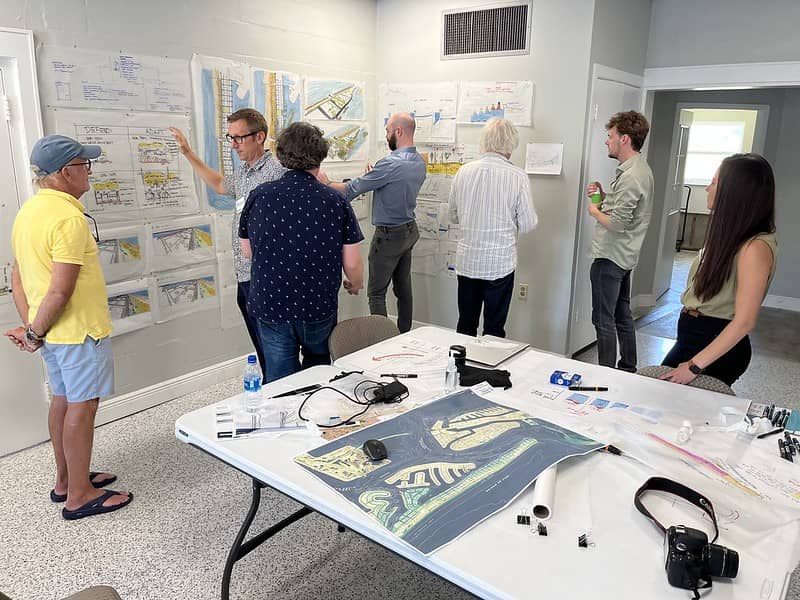Tampa Bay has a new resiliency resource

Four years after forming a Resiliency Coalition that includes 32 area governments and over 90 private partners, the Tampa Bay Regional Planning Council (TBRPC) has released its comprehensive action plan.
The consortium spent the last three years working on its Regional Resilience Action Plan (RRAP). The 140-page document serves as a resource for local governments to help mitigate increased flooding, extreme weather and various other impacts of a changing climate.
Although the TBRPC, headquartered in the Gateway Area of Pinellas County, has a decidedly local connection – Commissioner Janet Long co-chairs the coalition, and St. Petersburg Councilmember Brandi Gabbard is the council chair – regional collaboration was critical to the process.
Sean Sullivan, executive director of the TBRPC, said that many of the 32 local governments previously adopted resiliency measures to some degree. So, the coalition sought to learn from each other, incorporate best practices into the action plan and propel communities that lag behind.
“So, it’s really a win-win,” said Sullivan. “And the first of its kind, so we’re pretty excited about it.”

Sean Sullivan, executive director for the TBRPC. Photo provided.
The TBRPC has brought local governments and gubernatorial appointees together to analyze regional issues, resolve problems and share solutions since 1962. Its typical purview extends from Citrus to Manatee County and includes 21 municipalities.
Sarasota County and three more cities joined the Resiliency Coalition for the project. Sullivan said coalition members met with elected officials “10 months a year for three years” to gather input and support.
That engagement will continue, as he said the next step is meeting with politicians from the 32 governing bodies and encouraging them to incorporate the plan’s recommendations into public policy.
“We know that each city and county is unique,” he said. “We suggest that cities and counties choose from those (recommendations) that are the highest priority within their jurisdiction, but also to adopt the plan as a whole so that we have that uniform framework throughout the Tampa Bay region.”
Sullivan noted the expansive project faced obstacles from the start, as the Environmental Protection Agency (EPA) initially denied the TBRPC’s grant application. Sullivan, undeterred, said the council pleaded its case until agency officials realized the initiative’s importance and relented.
He also relayed that the TBRPC had to “wordsmith” its Memorandum of Understanding before over 120 public and private partners would sign on to the project. The final action plan contains 11 high-level goals, each with several objectives and recommended actions.
Those include: utilizing resilient and energy-efficient construction to build sustainable and attainable housing; increasing the resilience of public infrastructure and services; prioritizing a multimodal transportation network that can withstand climate impacts and reduces emissions; and helping businesses prepare and recover quickly from extreme weather events.
“This plan works when government and businesses work together,” said Sullivan. “The private sector has been great to work with. But in my mind – the government needs to be a leader on this.”
He said Hurricane Ian’s recent devastation to Southwest Florida reinforced the need for the region’s public and private sectors to collaboratively institute processes that decrease vulnerability. While increasing intensity and frequency of hurricanes and sea level rise are a prominent concern along the coast, Sullivan said that inland communities – like Plant City – must address chronic flooding problems.
He explained that inland flooding and hurricanes affect crops, which leads to food insecurity issues. Mitigating that challenge, Sullivan added, is just as critical as increasing resiliency to rising seas and storm surges.

In addition to infrastructure upgrades, St. Pete Beach is considering building offshore jetties and planting mangrove trees.
Additionally, he relayed how extreme heat negatively impacts the workforce. In 1970, the region experienced 40 days with temperatures above 90 degrees annually. That number, said Sullivan, has doubled to 80 days. He suggested shaping working hours around the hottest parts of the day as a possible solution.
“This document is not meant to scare anybody,” stressed Sullivan. “It’s just meant to help us adapt to a changing environment and more powerful storms.”
In another example of how the RRAP could spur action at the local level, Sullivan noted that St. Pete Beach officials are discussing adopting the coalition’s Resilient Uniform Shoreline Model Ordinance. Those best practices include upgrading seawalls and implementing measures to control or redirect flooding.
He believes the region’s elected officials realize that Tampa Bay is a beautiful place to call home, and understand the need to preserve and protect it. The TBRPC, Sullivan added, is now ready to “roll up our sleeves and put this plan into action.”
“Once word gets out that this plan is ready for release, we anticipate that we’ll get further inquiries – not only from the state but throughout the country,” he said.
View the full Regional Resilience Action Plan here.







